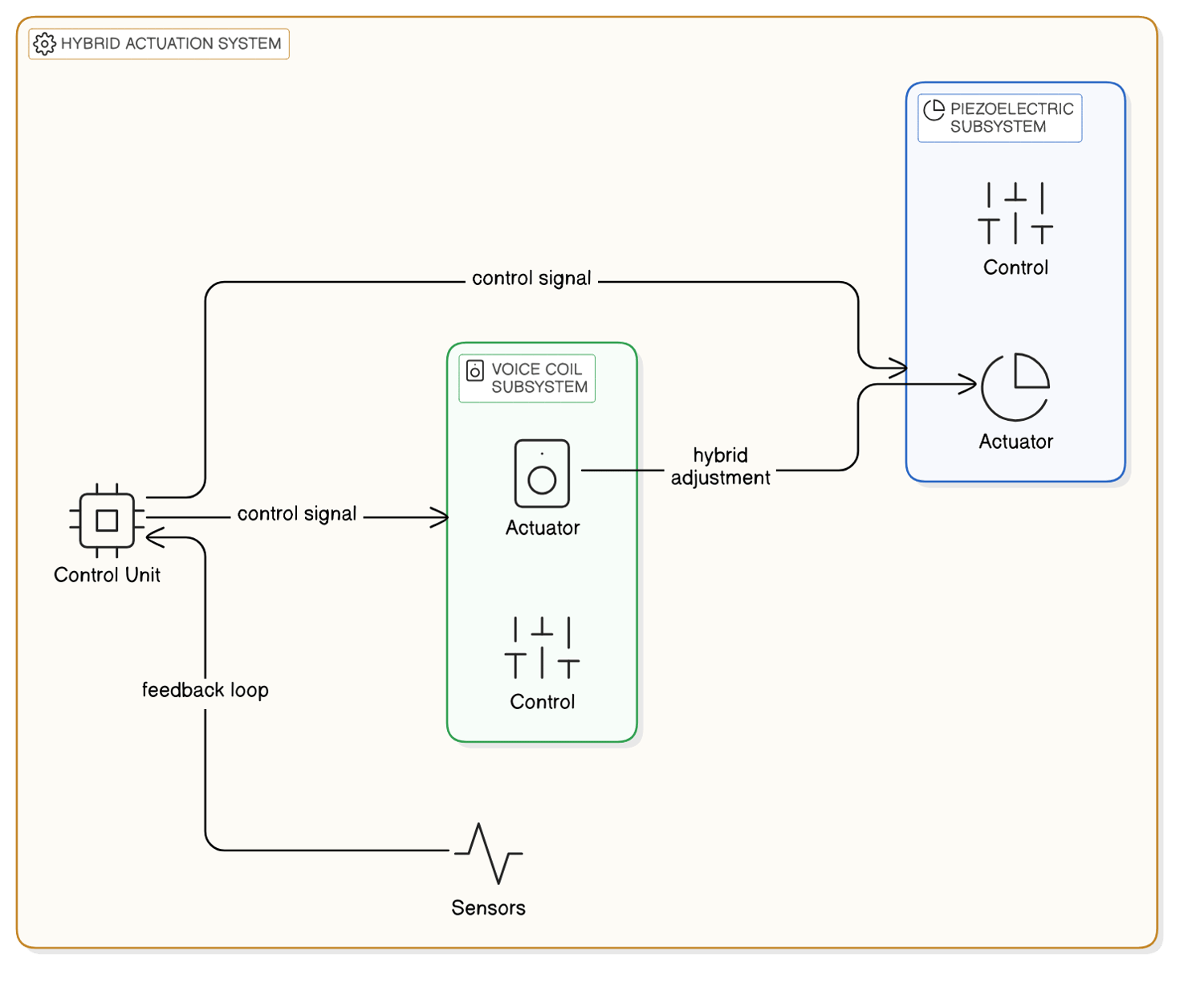Summary
This article explores the transformative role of voice coil actuators in smart ecosystems, highlighting their significance in modern technology advancements. Key Points:
- High-precision closed-loop control systems enhance actuator positioning through advanced sensors, crucial for applications like microscopy and nanopositioning.
- Integration with MEMS technologies leads to miniaturized actuators ideal for robotics and wearable devices, focusing on efficiency and reduced power consumption.
- AI and ML enable predictive maintenance of voice coil actuators, improving reliability and optimizing performance based on real-time data.
What are Voice Coil Actuators and Why Should You Care?
My First Voice Coil Actuator Project: A Tale of Triumph and Frustration
Day two rolled in with a sense of dread. After multiple failed tests, my buddy Jake popped by and casually suggested checking the power supply. “You sure you’ve got enough voltage?” he asked, raising an eyebrow. That’s when it hit me—I had only provided 5V instead of the necessary 12V!
Each setback felt like a gut punch—a personal failure weighing heavily on me. By day five, staring at the unresponsive actuator felt surreal; “What am I even doing wrong?” The emotional rollercoaster was exhausting—anticipation quickly turned to disappointment time and again. At that moment, we both just stood there in disbelief, wondering if this project would ever come together.
| Application Area | Advantages | Disadvantages | Latest Trends | Industry Insights |
|---|---|---|---|---|
| Medical Devices | High precision and reliability in surgical systems. | Limited payload capacity compared to other actuators. | Integration with robotics for minimally invasive procedures. | Growing demand for telemedicine solutions that require precise actuation. |
| Industrial Automation | Fast response times enhance production efficiency. | Potential overheating issues under continuous use. | Use of smart sensors for real-time monitoring and control. | Increasing adoption of IoT technologies in manufacturing processes. |
| Aerospace | Ability to operate in extreme environments and temperatures. | Higher costs due to specialized materials needed. | Development of lightweight materials for improved performance. | Rising focus on sustainability and eco-friendly technologies. |
| Consumer Electronics | Compact size allows integration into small devices. | Limited force output can restrict applications. | Emerging trends towards smart home devices utilizing VCAs. | Enhanced user interfaces with voice-activated controls becoming more popular. |
| Robotics | Facilitates precise movement and positioning capabilities. | Complex control algorithms required for optimal performance. | Advancements in AI leading to smarter robotic systems using VCAs. | Increased investment in automation across various sectors driving VCA innovation. |
The Turning Point: Overcoming Challenges in Voice Coil Actuator Integration
“Are you sure it’s not something fundamental?” one of our teammates murmured, hesitating as if questioning the very foundation of our approach. We all felt it—the weight of unspoken doubt hanging like a thick fog. A few even sat back in their chairs, arms crossed tight against their chests, eyes fixed on the ceiling as if seeking answers from above.
It was clear that this wasn’t merely about wiring or voltage anymore; it had become a group effort marred by uncertainty. As we gathered around the workbench again, there was an unsteady silence—a shared understanding that we were on thin ice. And then… no one spoke for what felt like ages; everyone seemed lost in their thoughts about how to move forward without further setbacks.
How We Helped a Client Successfully Implement Voice Coil Actuators
In the following weeks, we introduced new methods and conducted hands-on sessions aimed at simplifying their approach. Yet despite our efforts, setbacks persisted. “We tried adjusting the configurations, but it still isn’t responding,” someone sighed after another unsuccessful test. There was division among the team—some held onto hope while others feared it might be too late to salvage the project altogether. As uncertainty loomed large, one thing remained undeniable: progress was slow and every attempt left us questioning if we were truly on the right path or merely spinning our wheels.

 Free Images
Free ImagesFrequently Asked Questions about Voice Coil Actuators in Smart Ecosystems
When it comes to voice coil actuators (VCAs) in smart ecosystems, many people often wonder about their real-world applications and benefits. One common question that arises is: "How do VCAs actually improve the performance of smart systems?"
Well, let me tell you, the answer isn't just technical jargon! 💡 For instance, when integrated with smart sensors, VCAs can provide real-time feedback that significantly enhances system responsiveness. Imagine a robotic arm working alongside a manufacturing line—if the VCA detects an anomaly through its sensors, it can instantly adjust its position for precision tasks. This level of adaptability is something many overlook when considering automation.
Another frequent inquiry revolves around customization options: "Can I tailor VCAs for my specific needs?" Absolutely! Many users don't realize how factors like coil winding techniques or housing materials—such as aluminum versus stainless steel—can dramatically impact performance characteristics like thermal management and durability. Choosing the right materials not only boosts efficiency but also extends the lifespan of your actuator.
Lastly, there's often curiosity about power consumption: "Do VCAs consume a lot of energy?" The good news is that they are designed to be efficient! By leveraging high-conductivity copper in coils and neodymium magnets for enhanced magnetic flux, these devices convert electrical energy into motion without unnecessary waste. So yes, you can enjoy both power and precision!
If you're diving into incorporating VCAs into your projects or systems within smart ecosystems, remember—it’s all about understanding these nuances that empower you to make informed decisions! 😊
Beyond the Basics: Exploring Advanced Applications of Voice Coil Actuators?
The Voice Coil Actuator Debate: Precision vs. Cost in Smart Home Devices?
A Practical Guide: Selecting and Installing Voice Coil Actuators
When it comes to integrating voice coil actuators (VCAs) into smart ecosystems, understanding the selection and installation process is essential for achieving optimal performance. With my experience in this field, I’ve seen how the right approach can significantly enhance system responsiveness, making technology more efficient and effective. Let me guide you through a clear set of steps that will help you navigate this process smoothly.
#### Step-by-step Methodology
1. **Understand Your Requirements**
Before diving in, take a moment to assess your specific application needs. Consider factors such as load requirements and desired stroke length. Many people overlook this step; however, knowing these details upfront can save you time and trouble later on.
2. **Select the Right VCA**
Now that you have your requirements outlined, it's time to choose a voice coil actuator that meets those specifications. Look at key parameters like coil resistance and inductance while ensuring the materials used—typically aluminum or copper—align with your conductivity needs. Remember: choosing high-temperature rated materials can improve durability under various operational conditions.
3. **Prepare for Installation**
Gather all necessary tools including mounting brackets, screws, and alignment aids. Proper preparation here makes installation smoother (I usually keep an organized toolkit for easy access).
4. **Ensure Optimal Alignment**
During installation, focus on aligning the actuator precisely with minimal friction points. This is perhaps one of the most crucial steps! Misalignment can lead to inefficiencies down the line.
5. **Mounting Configuration**
Choose a mounting configuration that suits both your application needs and environmental conditions where the VCA will be deployed. Pay attention to feedback mechanisms if they are part of your control system for better accuracy.
6. **Testing Phase**
Once installed, power up your system carefully and conduct initial tests using controlled parameters to monitor performance closely (I recommend setting up a timer ⏱️ during testing phases so you don't lose track of time).
7. **Fine-tuning Adjustments**
After testing, make any necessary adjustments based on observed performance metrics versus expected outcomes.
#### Advanced Tips
If you're looking to further optimize or expand upon your setup, consider exploring additional features like programmable control systems or integrating sensors for real-time feedback loops—this could greatly enhance responsiveness within your smart ecosystem! Additionally, if you've installed multiple VCAs across different applications, comparing their performances can offer valuable insights into improving overall efficiency across systems.
By following these straightforward yet effective steps in selecting and installing voice coil actuators, you'll not only streamline processes but also unlock greater potential within your technological framework!

The Future of Voice Coil Actuators: What Innovations Lie Ahead?
Conclusion: Embracing the Power of Voice Coil Actuators in Smart Technology
However, it's essential to recognize that this trend is just beginning. As technology evolves, so too must our approaches and strategies for implementation. Developers and engineers should explore how they can adapt existing systems or innovate new ones by incorporating VCAs into their designs. This proactive mindset will be crucial as industries continue to seek smarter solutions.
Now is the time to take action—evaluate your current projects and consider whether integrating voice coil actuators could elevate their functionality and effectiveness. Don't wait for others to lead; become a part of this exciting transformation today!
Reference Source
Voice Coil Actuator Technology and Motion Control Applications
Voice coil actuation (VCA) technology, initially developed for audio speakers, has found new applications in medical, industrial, and aerospace fields.
The Future of Voice Coil Motors in Smart Appliances | Smooth Motor
Voice coil motors, also known as voice coil actuators or linear motors, are a type of direct drive motor that converts electrical energy into ...
The technology and application of voice coil actuator - IEEE Xplore
Voice coil actuator is a new-style versatile direct drive motors with special structure. Easy to be controlled, with high acceleration, high speed, high ...
Voice Coil Actuators | Linear actuators - Magnetic Innovations
The Technology Voice Coil Actuators consist of 2 main components, the coil assembly and the mover assembly. By applying a voltage across the 2-wire connection ...
Voice Coil Actuators | Sensata Technologies
Sensata delivers high-performance voice coil actuators designed to operate across wide temperature ranges and harsh environments.
Moving Magnet Voice Coil Actuators Offer Controllable Movement for ...
Voice coil actuators (VCAs) use similar technology to speakers, but they are designed to produce higher forces over a larger distances or strokes.
Voice Coil Actuators | Precision Motion - PI-USA.us
High precision voice coil stages and voice coil actuators for automation, focus control and positioning, manufactured by PI.
The technology and application of voice coil actuator - ResearchGate
Based on the Lorentz Force Principle, voice coil actuator is a new-style versatile direct drive motors with special structure.


 ALL
ALL Smart Ecosystem
Smart Ecosystem
Related Discussions